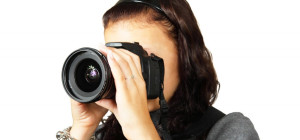 In the era of Instagram, iPhones, and widespread foodie-ism, anyone can be a food photographer. But the aspect that separates professional looking photography from the random snaps is much more than just an expensive camera.
In the era of Instagram, iPhones, and widespread foodie-ism, anyone can be a food photographer. But the aspect that separates professional looking photography from the random snaps is much more than just an expensive camera.
If there is one thing that people love more than eating is taking its pictures. Regardless of whether it's a quick camera snap or an elaborately lighted one, we simply love to see pictures of food.
Have you ever wondered how the pros make food good-looking enough to make us wish devour the computer screen itself?
Here are a few tips and tricks to help you out.
Shooting Full Bodied Food
Photographs look best when you shoot them full bodied. When you take the food out of an oven, it loses its beauty somewhat owing to the cool air. You can use several tricks to avoid this but the simple ones are the best.
- Click the food while it is hot and fresh
- Build the dish so that it appears full bodied. You may need a few things to help the food appear fuller.
Think about Colors in the Dish
For any photography, color is a major part. Food photography is no exception. So, keep the colors in mind.
You can add garnishing that is in contrast to the color of the dish. This often turns out to be extremely effective. The garnishing is as much about adding taste to the food as it is for spicing up the dish for an amazing picture.
Knowledge of the color wheel and the colors that contrast or complement well will serve you perfectly while photographing food. Styling food also relies on the surrounding dish, apart from the dish itself. Setting up the props and the table may prove a massive help or a hindrance in clicking fantastic pictures of food.
Setting the Table can Make or Break Photographs
Surroundings that food appears in are as significant as the food itself. Perfectly designed settings can add mood and context to the shot. Make sure to think about it a little.
What are the foreground and the background elements and shades that the food appears with?
Do you want to exclude the settings and simply go for a close up of the food?
Do your dishes match the color of the food? Are your surroundings perfectly set to offer a balanced composition?
Consider the Colors outside the Dish
This goes back to the styling. But remember, the significance lies in considering the colors of the cutlery, dishes, and the table cloth surrounding the main subject. The reason: they cast a significant impact on the result.
Colors need to be set deliberately as complimentary or contrasting. Both of them can function effectively. There are also a few colors that are quite difficult to use. For example, light green is hard to use if you want to make your dish appear appetizing.
Lighting and Food Photography
One of the most significant aspects that affect pictures of food is the quality of light. But here, you have control over the lights.
- Natural Window Lighting
Natural window lights rule professional food photography. Dispersed lighting casts soft shadows. This works perfectly with the food photographs. The best lights are from the front, coming over the photographer's shoulder. You can make all the angles of light work here. There might be a few equipment, which can help food photography. You may consider using a tripod depending upon availability of light.
- Reflectors
If you are eager to disperse the light or tone down the shadows, you can reflect natural lighting. This is possible with the purpose built reflectors. You can also improvise with the light colored or reflective materials.
- Artificial Lighting
You may not always be in a position to take advantage of natural lights. So, how can you make your picture great under such circumstances?
Dispersing and softening natural lights using reflectors and soft boxes can come in handy for you.
- Dark Food Photography
Dark setting and low light style is a growing trend in food photography. This is chiefly about using dark colors of food in combination with natural window lighting. This is quite effective in creating the mood.
Quick Tips on Better Food Photography
- Work with Professionals
Avail yourself of the talents of great chefs or your friends in the culinary school. People who are aware of the ways to cook and present the dishes will pep up your game. If you don't know any such people, treat yourself at a local restaurant. Make sure to take a seat near the window or an outdoor shaded table. Order a colorful, well-presented food. Start snapping the moment it is served. Hot and fresh!
- Get Overhead
If you shoot direct down, you can get a few striking images. Avoid shooting too wide. You can stand on a chair if you need. If you are doing this at home, you can set down the table cloth on the floor.
- Shoot a Little Above Eye Level
This works perfectly for full table settings, obscure background, or multiple dishes. The key here is to go a little above, so that you can capture the spread in the frame. This will minimize the negative space in the background.
- Fill the Frame
Creating a table full of food and proper utilization of space shows a nice atmosphere. It really gives a lot to absorb. Make one of the dishes the subject in the frame. You can leave space around the dishes, but make sure that the photo looks complete.
Though food photography is a demanding job, it is lot of fun too. Follow a few strategies to make photographing food a rewarding experience.
Shared by : www.sukainarajabali.com







